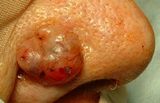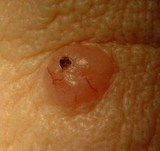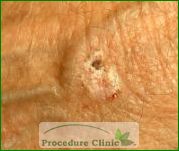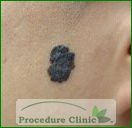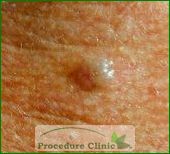
Skin cancer is the abnormal growth of skin cells, often caused by overexposure to the sun and can develop in all areas of the body. The three types of skin cancer are basal cell carcinoma, squamous cell carcinoma and melanoma. By consciously protecting yourself from sun exposure, you can greatly reduce the risk of skin cancer. In addition, early detection of skin abnormalities will increase one’s chances of survival if cancer is detected.
Skin cancer often develops in areas that are easily exposed to the sun, such as the scalp, face, neck, chest, arms, and legs. However, it can also affect areas less exposed, including the palms, underneath nails, spaces between toes, and genital region.
Skin cancer starts in the epidermis (outermost layer of the skin) and is caused by mutations in the DNA of healthy skin cells, leading to abnormal cell growth. These DNA mutations are often related to overexposure to ultraviolet (UV) radiation from sunlight and tanning beds. However, other factors such as exposure to toxic substances or having a condition that weakens the immune system may also contribute to cancer.
Factors that may increase your risk of skin cancer include the following:
- Excessive sun exposure – Risk of skin cancer increases substantially if you spend a lot of time under the sun or in a tanning bed, both of which emit harmful UV rays. Those who live in warm climates or at higher altitudes are more exposed to UV rays.
- Fair skin – Lighter skin tones contain less melanin, which means less UV protection. If you sunburn easily, you accumulate skin damage more easily than does someone with darker skin.
- History of sunburns – More sunburns means more skin damage, which increases your risk of developing skin cancer. Having sunburns earlier in life increases one’s risk of developing skin cancer as an adult.
- Family history of skin cancer – If someone in your immediate family has had skin cancer, you may be at higher risk of.
- Moles or precancerous skin lesions – People who have multiple moles or abnormal moles called dysplastic nevi are at increased risk of skin cancer. Abnormal moles are more likely to become cancerous, so regularly check them. Precancerous skin lesions found on the hands, arms, and face called actinic keratoses – rough, scaly patches that range from brown to dark pink – also increase your risk.
- Increasing age – Skin damage accumulates from childhood, and some cancers develop slowly over time.
Skin cancer can be diagnosed through either a skin examination by your doctor, or through a skin biopsy. A skin biopsy involves testing a sample of suspicious-looking skin to determine if cancer cells exist.
Basal cell carcinoma typically develops in areas that are exposed to sunlight, like the face, scalp and ears. Signs include a pearly or waxy bump, or a flat, brownish scar-like lesion.
Squamous cell carcinoma often occurs in areas that are exposed to sunlight, like the face, scalp and ears. Signs include a hard red nodule, or a flat lesion with a crusted surface.
Melanoma can occur in sun-exposed body parts, as well as areas that are less exposed to sunlight. In men, symptoms typically appear on the head, neck, or trunk. In women, melanoma usually develops on the lower legs. Any skin tone can be affected. Those with darker skin tones usually develop symptoms on their palms or soles, or under their nails.
Treatment
- Treatment depends on the type, size, and location of the skin lesions.
- Freezing – Precancerous skin lesions and small cancers are frozen using liquid nitrogen, and the dead tissue slides off after thawing.
- Excisional surgery – Cancerous tissue is cut out from the affected area. Can be used for most skin cancer cases.
- Mohs surgery – Typically used for larger, recurring or difficult-to-treat cancers. Cancerous area is removed layer by layer until no abnormal cells remain.
- Curettage and electrodesiccation – Simple procedure used for small cancers. After the growth is removed, the layers of cancer cells are scraped away, and an electric needle kills any remaining cancer cells.
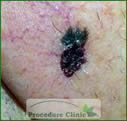
- Laser therapy – Typically used for superficial skin cancers. An energy beam vaporizes growths without damaging surrounding tissue.
- Radiation therapy – Radiation may be used in situations when surgery isn’t an option.
- Chemotherapy – Cancer cells are killed using topical drugs (creams and lotions applied directly to the skin). Systemic chemotherapy can be used to treat skin cancers that have spread outside the skin.
- Photodynamic therapy (PDT) – Uses combination of laser light and drugs that makes cancer cells sensitive to light. Requires patient to avoid direct sunlight for at least six weeks after treatment.
- Biological therapy – Medications are used to stimulate the immune system in order to kill cancer cells
Prevention
The following steps should be taken to prevent the development of skin cancer.
- Avoid the sun during mid-day – UV rays are harshest during the early afternoon, even on cloudy days and during the winter time. Exposing sunburns or tans to the sun can lead to accumulation of UV rays, which can lead to skin cancer.
- Always wear sunscreen – Sunscreen is very important in protecting your skin against most UV rays. Use an SPF of at least 15 on all exposed areas of your body.
- Wear protective clothing – It’s important to wear clothes that cover your body since sunscreen doesn’t block all UV rays. Dark clothing, broad-brimmed hats, and sunglasses are recommended.
- Stay away from tanning beds – They emit harmful UV rays.
- Be aware of sun-sensitizing medications – Some common prescription medications can make your skin more sensitive to sunlight, in which case you need to be extra careful about exposing your skin to sunlight.
- Self-examine your skin regularly – Examine all parts of your body for new growths or changes in existing moles, freckles, bumps and birthmarks.
